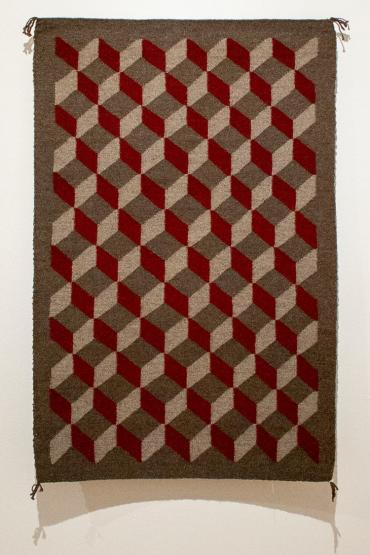Optic Rug
Optic Rug
Marie Manuelito
20th c.
Henry: There are many hexagons in this weaving. The hexagon is the shape we use to make our hogans (dwellings). In the large gallery space you will find an interactive on the floor that shows how we construct our hogans in the same way that geometers do a compass-and-protractor construction. Our hogans are designed in such a way that the morning light coming through the door will measure the summer and winter solstices.
Bob: This simple pattern communicates depth and direction with only three colors and two shapes. The weaving suggests at least three dimensions by using only two shapes in a tessellation—a covering of the plane by geometric figures—as such, it exemplifies the kind of spatial reasoning and representation common to mathematical inquiry. In this case, the weaver used color and shape to suggest three dimensions (stacked cubes) using only two dimensions (the plane of the rug covered by two rhombi). Can you reason by analogy to imagine what a four-dimensional cube would look like when represented in three dimensions?
